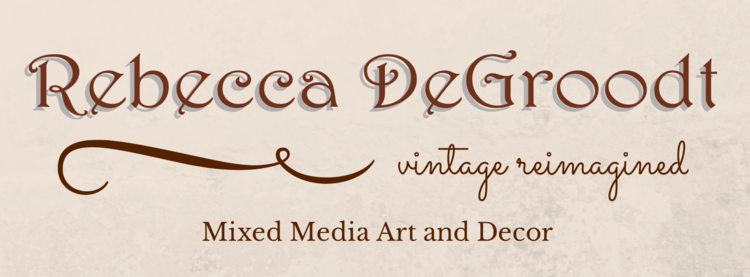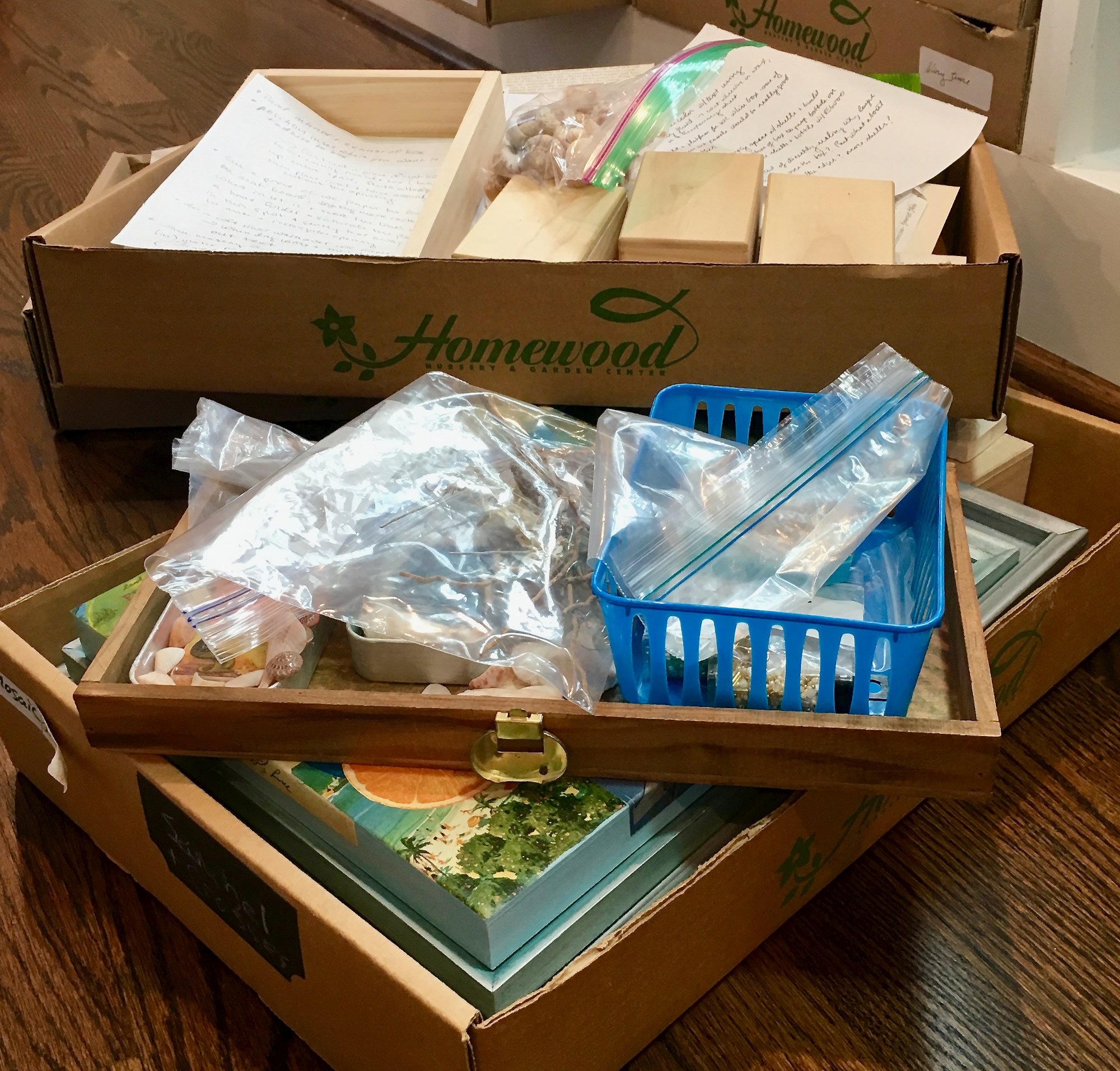Capturing the Ocean’s Spell… in an Altoids Tin
When I’m on the beach, anything feels possible. There’s something about all that vast expanse of open space and air, the bright light and the shifting shades of blue that seems to open the heart and the mind to life. We humans are drawn to the ocean and we seek to represent its beauty and rekindle the feelings of wonder and expansiveness it evokes in our art and decor. This is part of the appeal of shells and shellwork — they’re lovely little objects on their own, and they can’t help but remind us of the ocean’s magic.
Idea Debt
Every time I pick up a pretty bit from the beach, I have a project in mind. And here’s where I run into a problem — I have a lot of shells which means I have a lot of undone projects drifting around in my head. Have you ever heard of “idea debt”? I first came across the concept in the book Growing Gills by Jessica Abel. Jesica explains how having a whole bunch of ideas “swimming around in the brain” can cause an undercurrent of anxiety because at all times, some part of the brain has to be devoted to processing them.
I have shelves full of idea debt. For the past decade (?) inspiration has haunted me and I’ve been gathering up the things she points out on the beach, at antique malls, from paper stores, etc. and stuffing them in cardboard garden-center plant trays. As I said in the January newsletter, my mission in 2020 is to work through, theme by theme, some of the deepest piles of idea debt. Which brings us back to the “Sanibel Collection”. These are the projects I’m currently working on, the plan is to have them done sometime in February.
I’m not even sure when I started these small assemblages made from Altoids tins. The “Neptune’s Castle” picture was part of an advent calendar, and the tiny vintage postcard print? I’m not really sure where I got that. I was intrigued by jewelry made with an image encased in resin and I had the idea to set the resin-covered images among shellwork. At one point I think I was calling them “Mermaid Windows”, but I don’t think I’ll stick with that title. They’re meant to go under a glass cloche, or they could stand on their own. I came so close to completing them! I’m not sure why I shelved them, but the only things left to do are to finish the shell frames around the mouths of the tin and mount them on a shell and rock base. It may be that last step that side-tracked me, not sure exactly how that’s going to happen.
Finishing the shell frames will be easy; here’s a tip on gluing shells to a base:
I think I need a new glue gun.
Prepped substrates and a “practice” watercolor
Next up: lettering, watercolor and shells. There are so many fantastic sayings about the sea. Even a single word — I once did a lovely little shadowbox that featured the word “Persevere”, can be evocative when placed among shells. (No picture of that piece, unfortunately.) There are two, possibly three, quotes that I want to place on a watercolor background set among shells. I have the bases ready and painted, from a while ago. At the time I painted the substrates, I also tried a watercolor with lettering (in photo to right) but was not happy with the results. The project went back on the shelf. This time I’m going to try a slightly different format for the quotes but still surround them with shells.
Here are two techniques for filling in a large area with shells:
I’m also working on some beach-themed art cards. I’m (going to be) painting small, almost abstract watercolors of the water. The paintings will be paired with a strip of fabric collage suggesting the beach.
I save ziplock bags full of bits and scraps of lace and fabric just for collage. The fabric collage strips are in progress, as shown in the photo of my worktable on the left. I love to work on cards because they’re small and quickly completed, allowing for lots of experimentation with techniques and mediums.
One last project to share, and this one is actually completed. It simply required several coats of varnish, and a label and hanging mechanism on the back, and it was done. Sunshine State doesn’t include shellwork but it is all about the beach. I had an incentive to finish this one — it’s headed to Florida to be in the silent auction at the Rotary Sanibel Arts and Crafts fair over President’s Day weekend.
I hope it reminds someone of exactly what they love about the beach.
Sunshine State, mixed media collage on 12x12 wood artist’s panel














